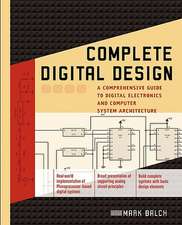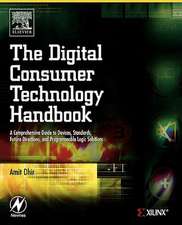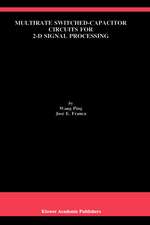Carbon for Sensing Devices
Editat de Danilo Demarchi, Alberto Tagliaferroen Limba Engleză Hardback – 21 oct 2014
| Toate formatele și edițiile | Preț | Express |
|---|---|---|
| Paperback (1) | 639.59 lei 6-8 săpt. | |
| Springer International Publishing – 22 sep 2016 | 639.59 lei 6-8 săpt. | |
| Hardback (1) | 645.79 lei 6-8 săpt. | |
| Springer International Publishing – 21 oct 2014 | 645.79 lei 6-8 săpt. |
Preț: 645.79 lei
Preț vechi: 759.76 lei
-15% Nou
Puncte Express: 969
Preț estimativ în valută:
123.61€ • 134.31$ • 103.90£
123.61€ • 134.31$ • 103.90£
Carte tipărită la comandă
Livrare economică 21 aprilie-05 mai
Preluare comenzi: 021 569.72.76
Specificații
ISBN-13: 9783319086477
ISBN-10: 3319086472
Pagini: 264
Ilustrații: XII, 264 p. 118 illus., 80 illus. in color.
Dimensiuni: 155 x 235 x 22 mm
Greutate: 0.57 kg
Ediția:2015
Editura: Springer International Publishing
Colecția Springer
Locul publicării:Cham, Switzerland
ISBN-10: 3319086472
Pagini: 264
Ilustrații: XII, 264 p. 118 illus., 80 illus. in color.
Dimensiuni: 155 x 235 x 22 mm
Greutate: 0.57 kg
Ediția:2015
Editura: Springer International Publishing
Colecția Springer
Locul publicării:Cham, Switzerland
Public țintă
ResearchCuprins
Section 1 Carbon Materials and their preparation.- Introduction to Carbon materials.- Technologies of Carbon Materials. Syntheses and preparations.- Section 2 Functionalization of carbon materials and surfaces.- Enhancing the surface sensitivity and selectivity: functionalization of carbon nanomaterials.- Section 3 Applications and devices.- Hybrid and nano-composite carbon sensing platforms.- Carbon nanomaterials for electrochemical and electrochemiluminescent medical sensors.- Silicon Carbide Materials for Biomedical Applications.- PiezoResistance Strain and Pressure sensing using CNT+Polymers.- Diamond sensors.
Recenzii
“This book focuses on why carbon is playing such a large role as a new sensing material. It contains three parts. … This book, loaded with beautiful full color illustrations, graphs, and tables of experimental data, would be an excellent resource for any scientist involved with carbon based sensing applications.” (IEEE Electric Insulation Magazine, Vol. 31 (6), 2016)
Notă biografică
Danilo Demarchi is an Assistant Professor in the Elettronica e Telecomunicazioni department of Politecnico di Torino, Italy. Alberto Tagliaferro is an Associate Professor in the Elettronica e Telecomunicazioni department of Politecnico di Torino, Italy.
Textul de pe ultima copertă
This book reveals why carbon is playing such an increasingly prominent role as a sensing material. The various steps that transform a raw material in a sensing device are thoroughly presented and critically discussed. The authors deal with all aspects of carbon-based sensors, starting from the various hybridization and allotropes of carbon, with specific focus on micro and nanosized carbons (e.g., carbon nanotubes, graphene) and their growth processes. The discussion then moves to the role of functionalization and the different routes to achieve it. Finally, a number of sensing applications in various fields are presented, highlighting the connection with the basic properties of the various carbon allotropes. Readers will benefit from this book’s bottom-up approach, which starts from the local bonding in carbon solids and ends with sensing applications, linking the local hybridization of carbon atoms and its modification by functionalization to specific device performance. This book is a must-have in the library of any scientist involved in carbon based sensing application.
• Provides comprehensive coverage of carbon for sensing devices, from molecular bonding and its modification by functionalization to device application;
• Discusses all forms of carbon for sensing devices, including carbon nanotubes and graphene, and explains applications to numerous fields;
• Includes coverage of the most sophisticated and up to date fabrication methodologies.
• Provides comprehensive coverage of carbon for sensing devices, from molecular bonding and its modification by functionalization to device application;
• Discusses all forms of carbon for sensing devices, including carbon nanotubes and graphene, and explains applications to numerous fields;
• Includes coverage of the most sophisticated and up to date fabrication methodologies.
Caracteristici
Provides comprehensive coverage of carbon for sensing devices, from molecular bonding and its modification by functionalization to device application Discusses all forms of carbon for sensing devices, including carbon nanotubes and graphene and explains applications to numerous fields Includes coverage of the most sophisticated and up to date fabrication methodologies Includes supplementary material: sn.pub/extras






















